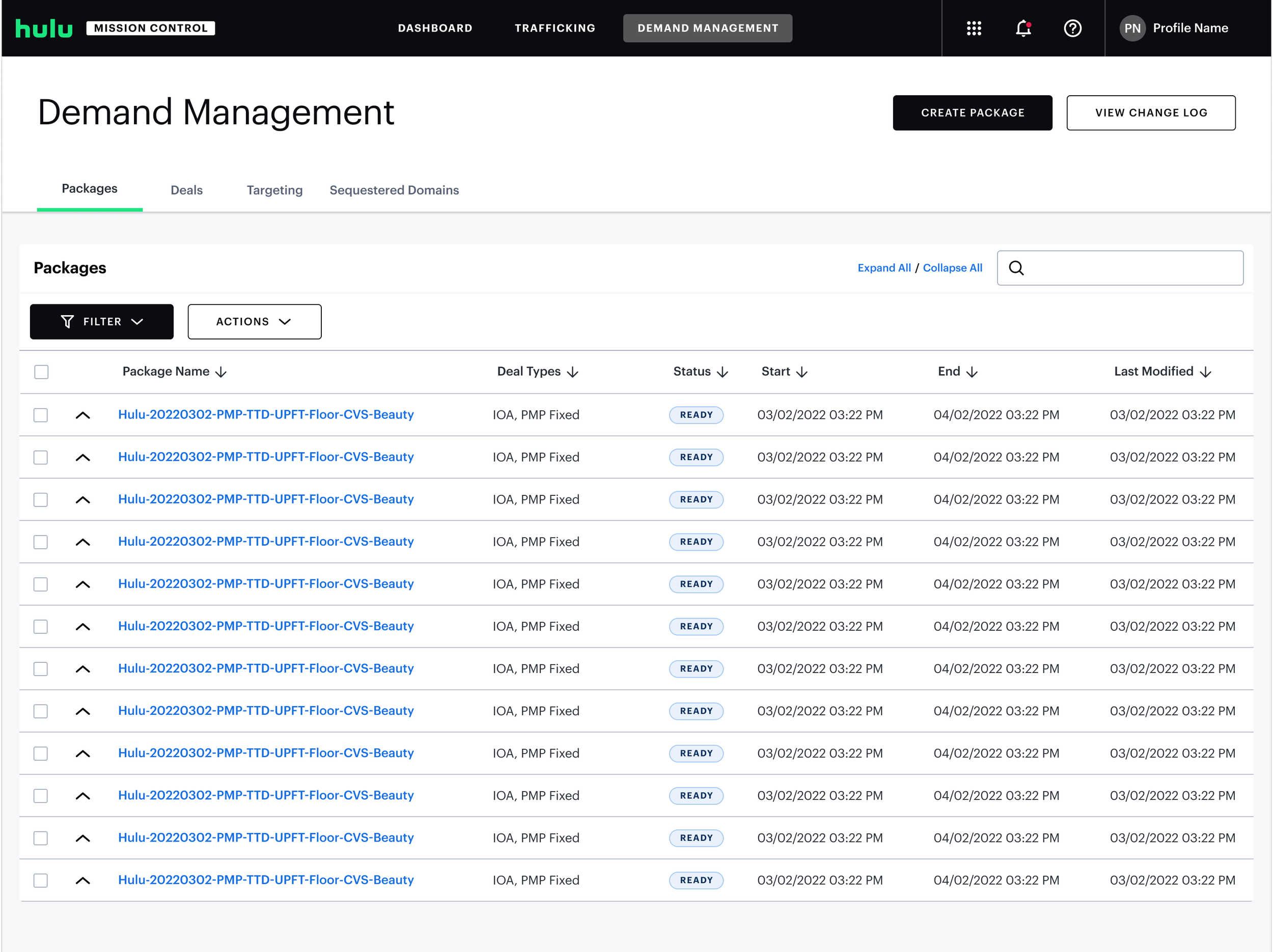Smart Pricing for Ad Inventory
Prior to this project, ad pricing was entirely manual—employees managed rates in spreadsheets, and the development team had to push every price change.
I led the creation of the Pricing Tool from scratch, enabling the pricing team to manage and update rates themselves. This introduced more pricing variety and allowed for customized or loyalty-based discounts.
Timeline: 5 months
Outcomes: The tool cut CPM adjustment timelines from weeks to minutes, allowing the pricing team to respond to market opportunities in real time. It removed their reliance on engineering resources, freed up agile capacity for product development, and introduced flexible pricing options that better served our growing mix of small businesses, enterprises, and agency clients.
Why Uniform Pricing Holds Us Back
Hulu Ad Manager (now Disney Campaign Manager) launched in March 2020, giving advertisers a way to create and manage their own Hulu campaigns. For the first few years, it used a single rate card or CPM (Cost per 1,000 views), which meant all ad campaigns were charged the same rate—adjusted occasionally based on seasonality and ad inventory availability.
Because everyone was charged the same rate, we missed out on key business opportunities:
No way to charge premiums for additional targeting (ie., geo, age, gender)
Couldn't offer discounted rates for new or returning advertisers
No simple way to adjust pricing for seasonality (such as raise CPMs during holidays, or lower during slow periods)
The Spreadsheet Struggle
The internal pricing team had no way to adjust CPMs directly in Hulu Ad Manager. They had to submit engineering requests for every change. With no platform to manage rates, they tracked everything manually in spreadsheets.
Example of how the pricing team tracked rate cards in spreadsheets. Advertiser names and CPM amount have been blurred out.
Meeting the Need: Smarter Rate Card Management
A backlog item called “Pricing Manager” proposed a new tool allowing the pricing team to create and manage multiple rate cards.
The goal: reduce engineering workload by eliminating manual CPM updates and help the pricing team automate parts of their workflow.
We got the green light to start working on this pricing tool in summer 2022 with a target launch of early 2023.
MVP Must-Haves
This new tool needed these features for launch:
Ability to create, updating, and delete rate cards
Each rate card should have option to set start and end dates and premium pricing add-ons
Classify rate cards by type (political advertising had a different pricing model)
Setting start and end dates
Prioritizing rate cards (higher priority rate card overrides a lower one)
Managing advertiser groups that can be assigned to specific rate cards
Why do we want “advertiser groups”?
Each advertiser group can consist of agencies or individual advertisers
Instead of manually adding advertisers one by one, pricing teams can assign entire groups to a rate card, thereby reducing workload
Advertisers can be grouped on a variety of factors such as repeat customers, agency users, new customers, etc.
Rapid Discovery & Early Ideas
This was a fast-moving, niche project with limited time for discovery. I met with the pricing team to understand their current workflow (where I learned they manually tracked pricing in spreadsheets) and consulted with other designers who worked on internal tools for additional context.
Internal Tool with Start/End Dates
A teammate shared designs for a tool where items (in this case: deal packages) were organized by type and by start/end dates.
Internal Tool with Rate Cards
Another teammate shared a legacy rate card tool used for linear advertising, which included several features similar to what we needed in the new pricing tool.
Wireframes
Using insights from the pricing team and existing tools and design systems, I began drafting initial concepts for the pricing tool.
I mocked up a table to manage priority rankings (initially called “rule list”), along with flows for editing rate cards and advertiser groups.
Refining the Flows
I converted the wireframes into high-fidelity mockups. I decided to use a side panel and then didn’t need a separate tab for rate card editing.
Final Rate Card Flows
I refined the flows to include a sidebar with two tabs—one for rate card details and one for pricing. Due to scope constraints, I had to remove drag-and-drop for priority ranking.
Final Advertiser Group Flows
Advertisers were split into two views: individual advertisers and advertiser groups. It took me a while to arrive at this solution because I needed a clear way to organize advertisers—some belonged to groups, others did not.
This approach let users choose the view that best fit their workflow, while still being able to see assigned rate cards in both.
Final Design Walkthrough
Delivering Value Under Constraints
This was a quick project, so there wasn’t much time for UX research, but I did share the designs with the pricing team during regular check ins. If I had more time, I would have done more follow up. Pricing tool released in early 2023 and I haven’t done many updates due to the amount of other projects I’ve had to switch to.
Building an internal tool from scratch, on a tight timeline, with overseas developers was a challenge, but I’m confident it helped the pricing team reduce a lot of manual work.
Where the Pricing Tool is now
The pricing tool hasn’t changed significantly since launch. We've added some new rate card options, like "publisher" (to specify whether the ad airs on Disney+, Hulu, or both).
I’ve made a few UI updates, but most changes have been backend or performance-related.








